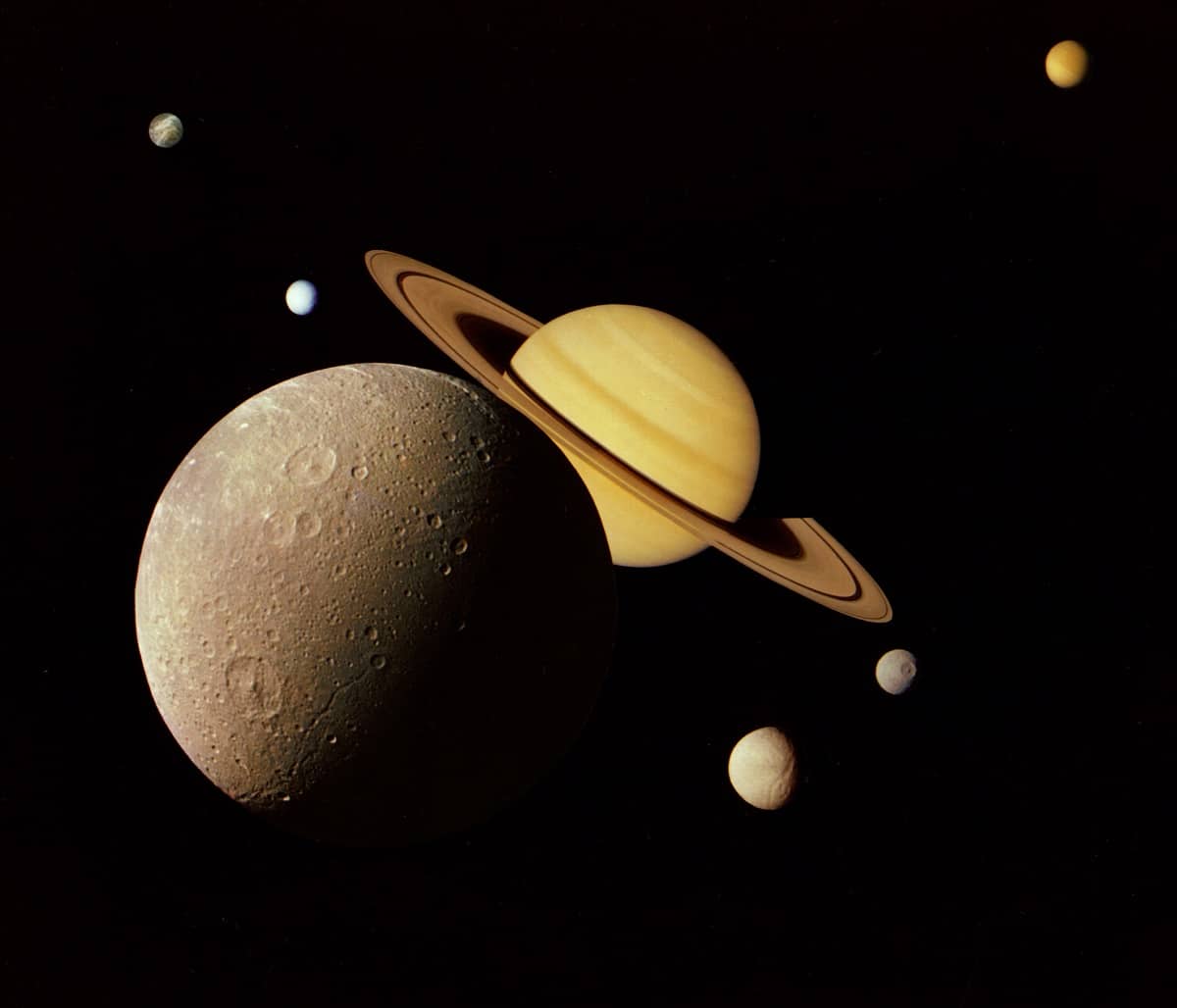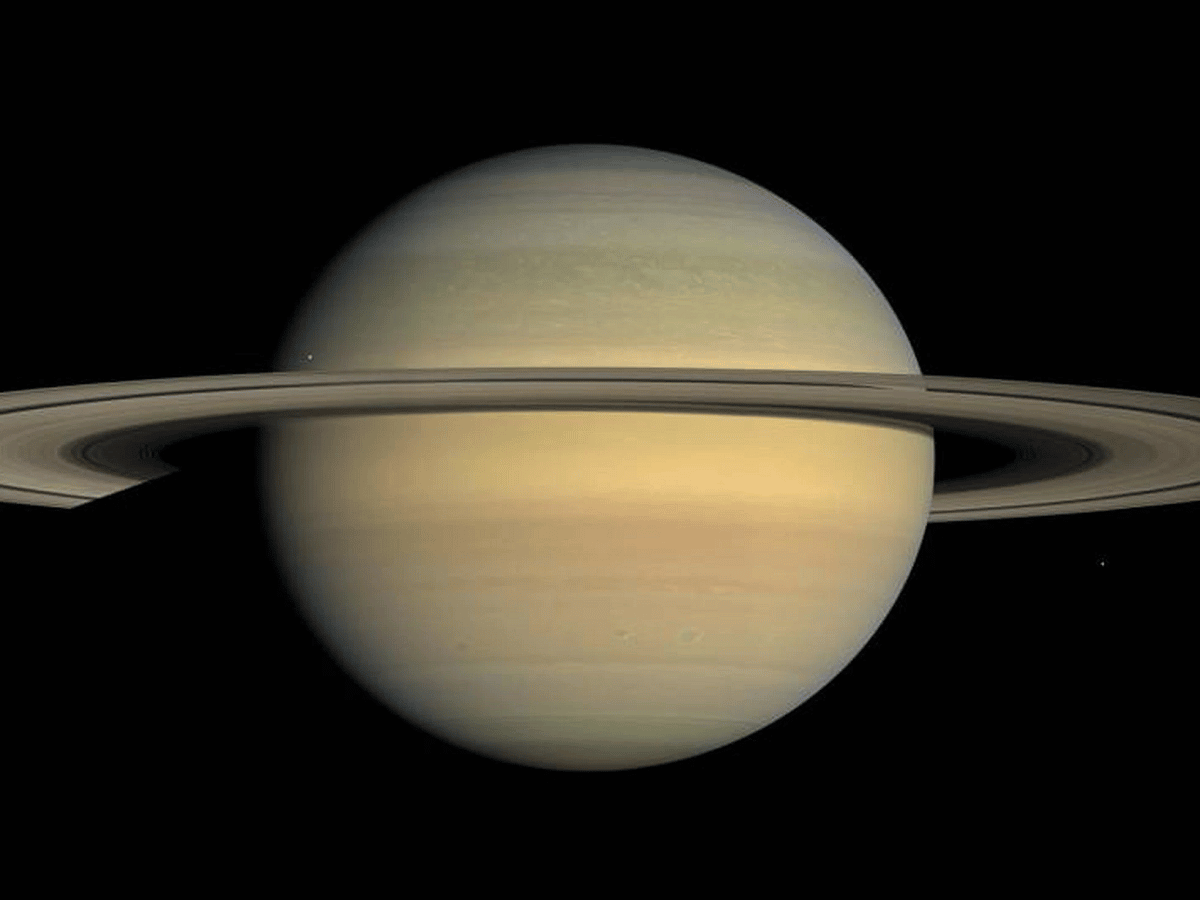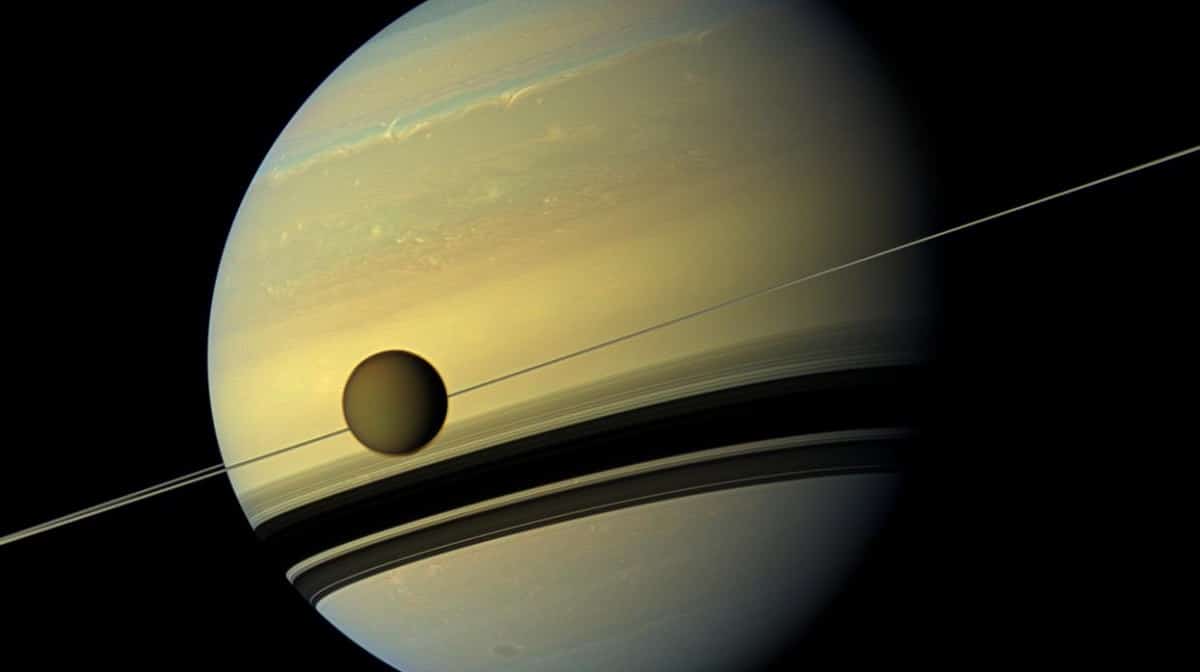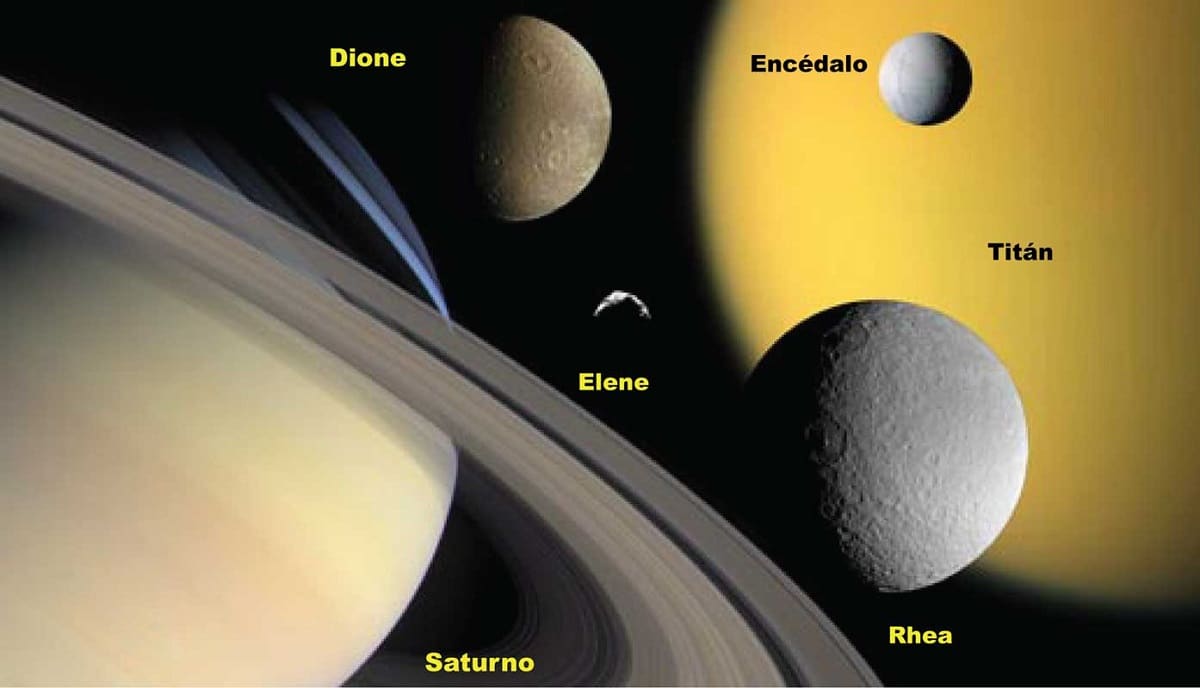
Saturn has many, many moons, and they come in many varieties. In size, we have moons ranging from mere tens of meters to the gigantic Titan, which accounts for 96% of all matter orbiting Earth. many people wonder how many satellites does saturn have.
For this reason, we are going to dedicate this article to tell you when Saturn has satellites, the characteristics of each one and how they have been discovered thanks to the technology of science.
characteristics of the planet

Let's remember that Saturn is the sixth planet closest to the sun in the solar system, it is located between Jupiter and Uranus. It is the second largest planet in the solar system. It has a diameter of 120.536 kilometers at the equator.
Regarding its shape, it is somewhat crushed by the poles. This shredding is due to its rather fast rotation speed. The ring is visible from Earth. It is the planet with the most asteroids orbiting it. Given its gaseous composition and its abundance of helium and hydrogen, it is classified as a gas giant. Out of curiosity, its name is derived from the Roman god Saturn.
A planet has asteroids that orbit it through the effects of gravity. The bigger a planet is, the more gravitationally it pulls and the more asteroids orbiting it can accommodate. Our planet has a single satellite that orbits us, but it also has thousands of rocky fragments attracted by our gravitational field.
How many satellites does Saturn have?

Saturn's moons are divided into different groups based on how they orbit the planet (the distance they travel, the direction, the inclination, etc.). There are more than 150 small moons immersed in its rings. (called circummollites), along with the grains of rock and dust that form them, while other moons orbit outside of them and at various distances.
Determining exactly how many satellites Saturn currently has is tricky. It is estimated to have more than 200 moons, however 83 of them we can actually consider to be moons because they have known orbits and are located outside the rings. Of these 83, only 13 have larger diameters (greater than 50 kilometers).
More moons may be discovered over the years. One of the latest discoveries of 2019 was the addition of at least 20 satellites to that list. Many of Saturn's moons present quite different landscapes to what we have here on Earth, although some may support some form of life. Below, we'll take you a little deeper into some of the more notable ones.
Titan
Titan is a large, icy moon whose surface is hidden by a thick, golden atmosphere.. It is much bigger than the moon or even Mercury. It is the second largest moon in the solar system after one of Jupiter's moons, called Ganymede.
In addition to its size, it is also notable for being the only celestial body (besides Earth) that has significant amounts of permanent liquid on its surface. Titan has rivers, lakes, oceans, and clouds from which methane and ethane precipitate, forming a cycle similar to that of water on Earth.
In larger oceans, there may be life forms that use different chemical elements than what we are used to. Secondly, Beneath Titan's huge icy shell, we found a mostly water ocean that could also support microscopic life forms similar to those on Earth.
Enceladus
The most distinctive feature of Enceladus is that we can find huge columns of salty water emanating from the interior of the subterranean ocean below its icy shell through the cracks.
These plumes leave behind a trail of icy particles that managed to reach orbit, forming one of Saturn's rings. The rest falls back to the surface as snow., making it possible for this moon to have the whitest, most reflective, or brightest surface (albedo) in the entire solar system.
From samples of these plumes, it can be concluded that, in addition to the presence of chemical elements necessary for life, there may be hydrothermal vents similar to those at the bottom of the ocean on Earth, which also spew hot water. Therefore, Enceladus is very likely to support life.
Rhea, Dione and Thetis

Rhea, Dione, and Tethys are very similar in composition and appearance: they are small, cold (down to -220ºC in shaded areas), and airless (except Rhea), with bodies that look like dirty snowballs.
These three sister moons rotate at the same speed as Saturn and always show Saturn the same face. They are also very bright although not as much as Enceladus. They are believed to be made primarily of water ice.
As we mentioned before, Rhea is not without air: she has a very fragile atmosphere around her, full of oxygen and carbon dioxide (CO2) molecules. Rhea is also the second largest moon of Saturn.
japetus
Iapetus ranks third among Saturn's moons. Divided into two distinct hemispheres: one bright and one dark, is one of the greatest mysteries of the solar system. It is also notable for its "equatorial ridge", consisting of 10 km high mountains encircling the equator.
Mimas
The surface of Mimas is covered in huge impact craters. The largest, at 130 kilometers in diameter, occupies almost a third of one face of the moon, giving it an appearance very similar to the Death Star from Star Wars. It also always has the same face as Saturn and is very small. (198 km in diameter). It is closer to Enceladus than to Enceladus.
Febe
Unlike most of Saturn's moons, Phoebe is a fairly dim moon dating to the early solar system. It is one of the most distant moons of Saturn, about 13 million kilometers from Saturn, almost four times farther than its nearest neighbor, Iapetus.
It revolves around Saturn in the opposite direction to most other moons (and generally to other bodies in the solar system). Therefore, its orbit is said to be retrograde.
I hope that with this information you can learn more about how many satellites Saturn has and their characteristics.